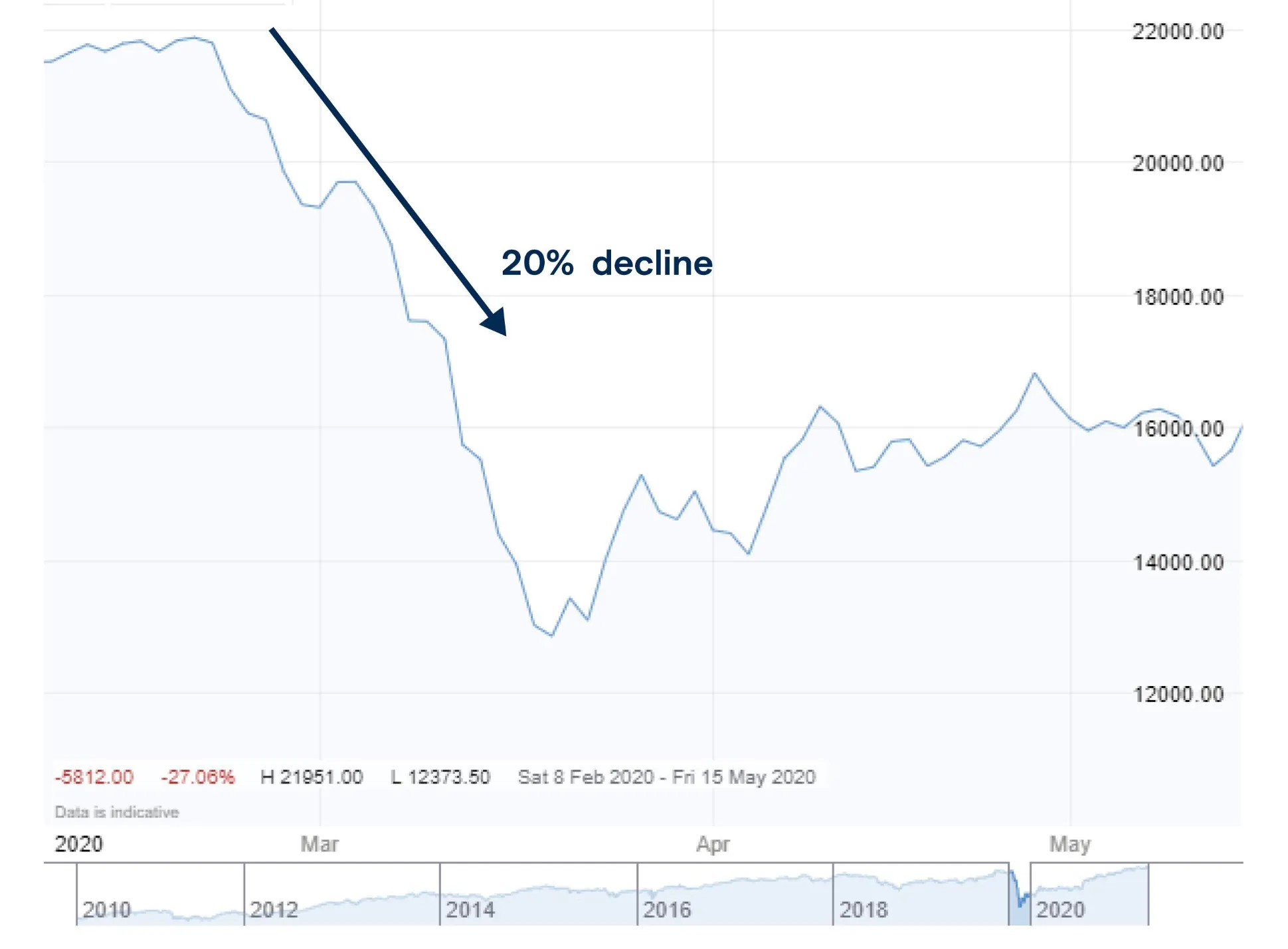How to trade in a declining market? Complete trading training in a descending market
A declining market may cause the economic situation to decline and leave the investor in a state of uncertainty, But it can also provide opportunities for investors. You do not have to wait for the market to rise to make a profit. The digital currency market has the potential to take advantage of rough downhills as well. Trading in a downtrend can also lead to a profit. 
What is a Descending Market?
A bear market is a market in which prices fall sharply following recent peaks. A bear market is characterized by at least a 20% drop in price. When such conditions prevail in the market, the investor is frightened and may withdraw his money from the transaction and look at the market with negative emotions to avoid wasting financial income or prevent further losses. Such an atmosphere would cause prices to fall further and increase the risk of trading in a bear market. But trading in a declining market and making money is still not far off.
The chart below depicts a bear market:

You can see that the price has been falling for three weeks and has fallen by 20%.
Top Five Trading Strategies for Trading in a Descending Market
1. Being in a short position or selling on credit
As the saying goes, “The trend is your friend.” Borrowing is a way to profit by recognizing the downward movement of prices in the market. If your prediction comes true, you will benefit. But even in a bear market, the price may change direction, and you will lose if you make a mistake. In this way, trading in the downtrend market is also possible.
2. Find the right opportunity to enter the position
When the price reduction reaches 20%, the downtrend officially begins. So if you are looking for an opportunity to sell on loan and settle into a short position, this is a good opportunity. Although the price is likely to continue to fall, its duration is unknown, and the market trend may return.

3. Make a profit at regular intervals
The direction of price movement in a bear market is likely to be downward, and such a situation is a good opportunity to make a regular profit. But it is important to remember that the price can change direction, even in a bear market.
4. Trade using Indices and Mutual Funds
an index such as FSTE 100 is a basket of different stocks with the highest market value, and mutual funds, or ETFs, track the performance of a market, index, or industry. As downward markets are initiated by supply and demand parties and, in turn, affect economic conditions, these indicators provide a good opportunity for investors to take advantage of similar expected price movements. Naturally, if price movements go against expectations, there will be losses.
5. Use a Stop Loss order to trade in the descending market
order loss is an instruction based on which you can automatically exit your trading position by reaching a certain price. If you are in a short position, your loss limit should be higher than the price at which you started your position. This risk management strategy will help you reduce losses if market flow goes against your expectations.

The difference between a downturn and a downturn and its role in the downtrend market
A declining market is deeply linked to a recession, and each can lead to the other. The two economic concepts are similar in some respects but fundamentally different. A downturn is formed when prices are steadily declining, but a downturn is related to a decline in the economy’s overall performance. It is often characterized by negative growth and declining GDP. Trading in a bear market may be profitable.
The intrinsic link between the two concepts lies in factors such as their cause and effect: geopolitical crises, epidemics, investor sentiment, and consumer spending.

Types of descending markets
Descending markets can be divided into three categories:
- Cyclical: A cyclical or cyclical market is created by rising interest rates and high inflation at the end of a business cycle. Trading in this type of bear market can be difficult.
- Structural: A structurally declining market caused by financial bubbles or other unbalanced economic crises, Like the global financial crisis.
- Event-driven: This type of descending market, as its name implies, is created by a specific and important external event such as Covid 19.

The difference between a bear market and a bull market
Understanding the difference between an uptrend and a downtrend helps the effectiveness of trading strategies. This distinction is important because the correction of an ascending market may be confused with a declining market, and as a result, our expected outcome may be very different. Understanding the difference between the two concepts will help to monetize the downturn in the market. Trading in a bear market is possible after determining the type of market. This section points out the main differences between the two markets.
| Descending market | Ascending market |
| Significant price reduction, at least 20% | Price growth with an upward trend over a long period |
| Supply is greater than demand | Demand is greater than supply |
| It is usually accompanied by analysis and shrinking of the economy | It is generally associated with a flawless economy |
| Emotions are related to a downturn in the market due to its high potential for losses and losses and will decline further by withdrawing funds. | Investors’ feelings are associated with self-confidence and will increase the uptrend with more purchases. |
| Gains are made in the sale of loans, and timely sales prevent further losses. | Profits come from borrowing |
Concluding remarks
A bear market is created by a significant drop in price, at least 20% of the last price peak. So a declining market is associated with a recession. Trading and making money in a declining market is possible. To trade in a declining market, it is better to use strategies to increase your success chances. In a bear market, take advantage of selling borrowings and making a profit with the right price movement forecast. Finding the right entry point to the position is very important, and when you see a 20% reduction in price, you can enter the short position. Also, there is no guarantee that the price will not return, but it is better to use a Stop Loss order to avoid losses.










